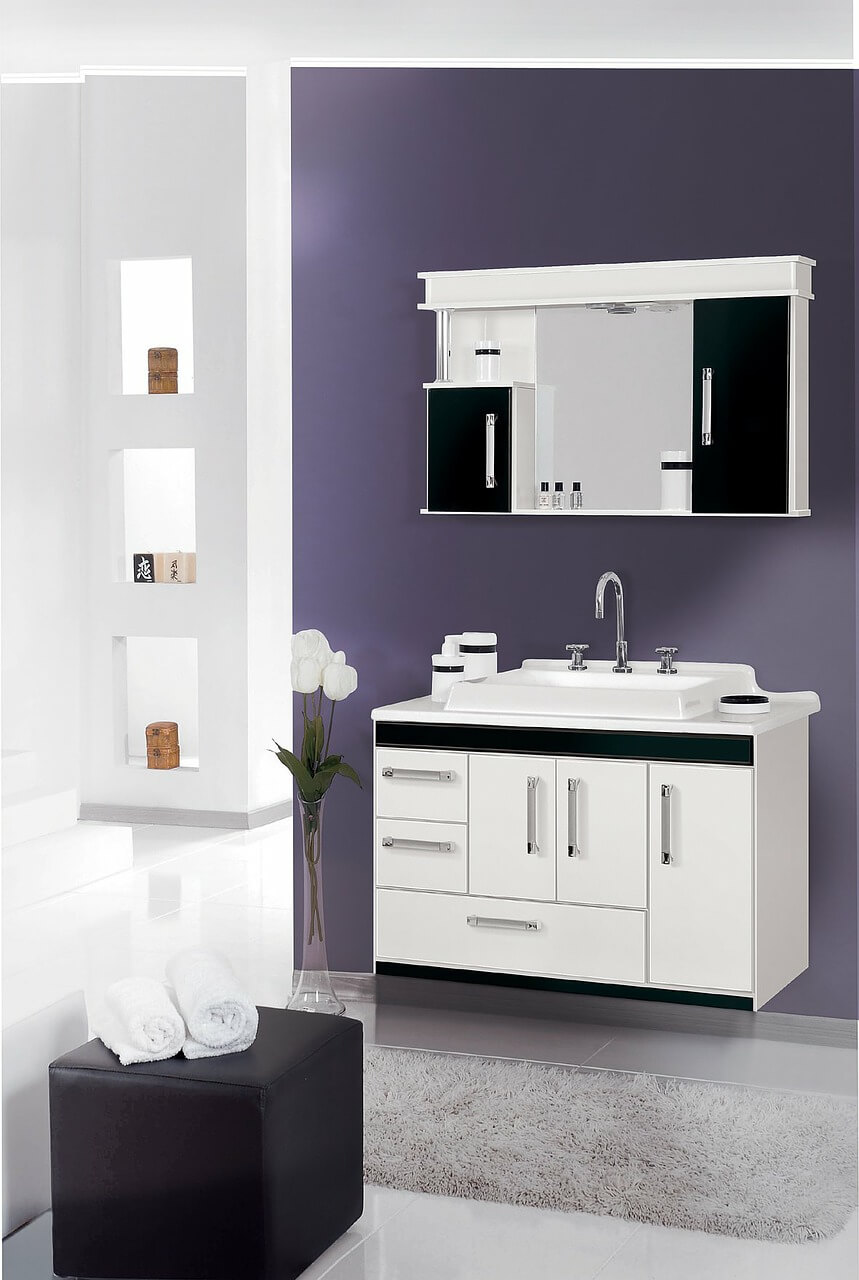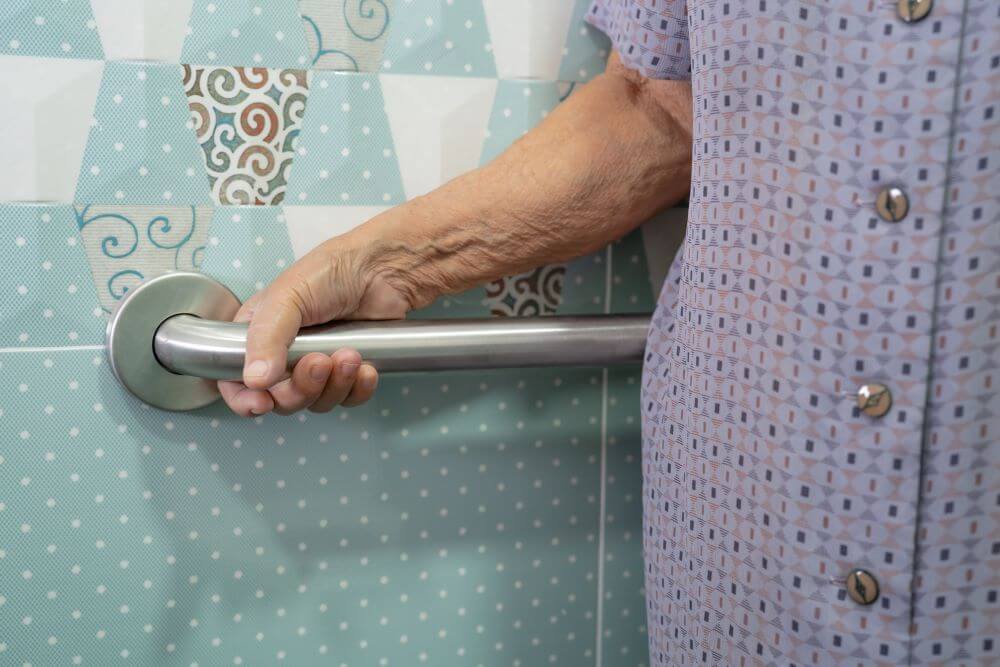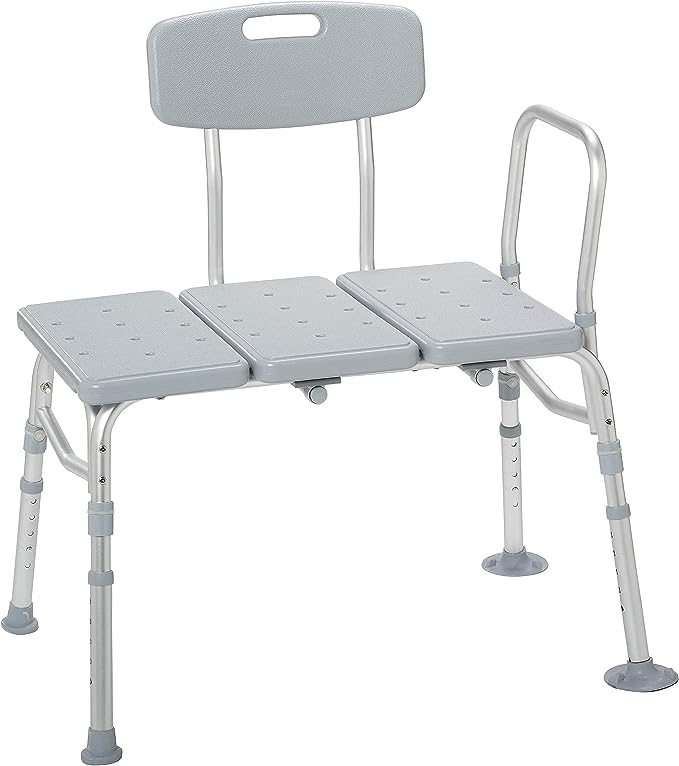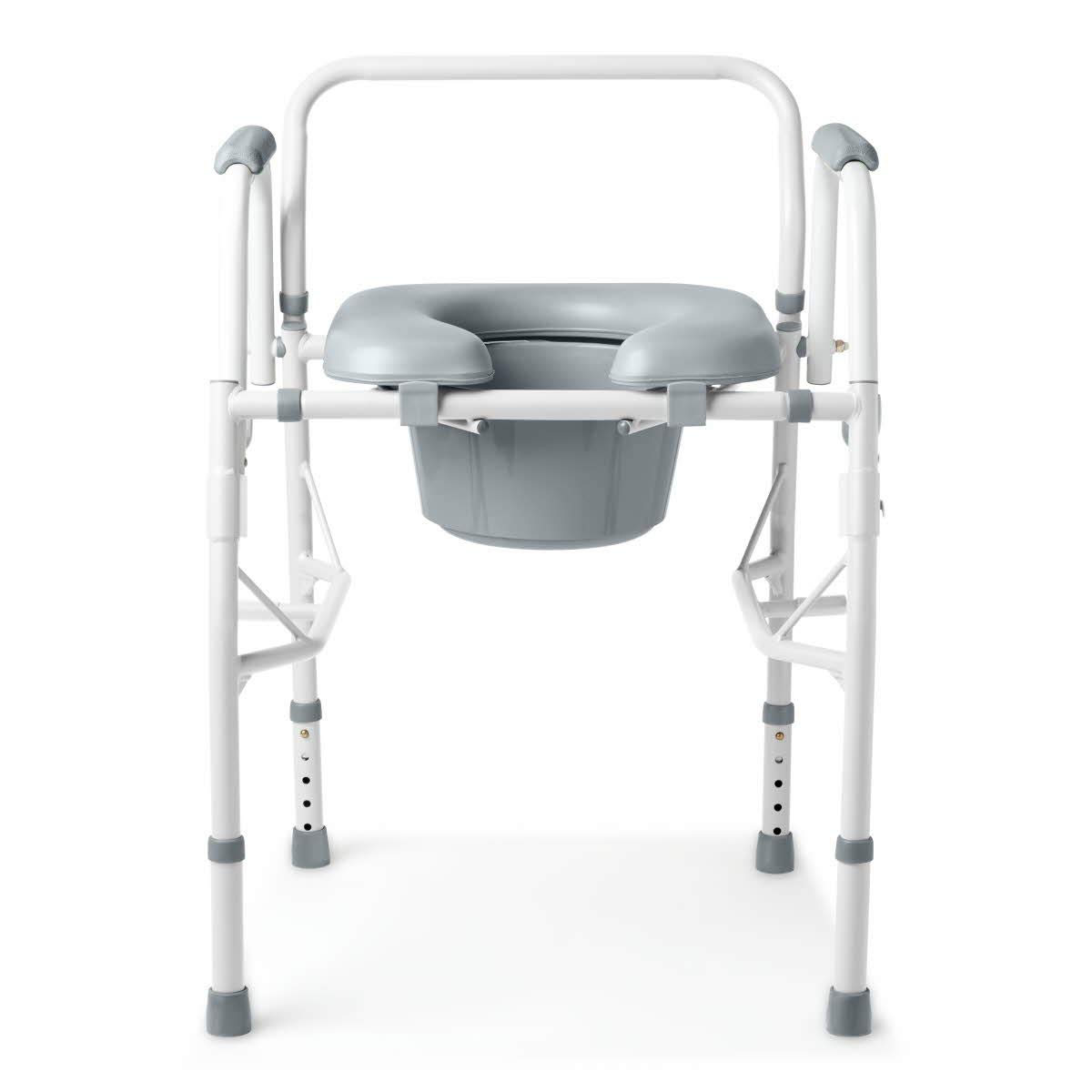Identifying Alzheimer’s Bathroom Safety Issues
Alzheimer’s bathroom safety is a priority for all homes with someone with Alzheimer’s Disease living in them. Many preventable accidents have happened in bathrooms. It is not difficult or too expensive to make your bathroom a safer room.
First, make sure the room has adequate lighting and a night light in place.
If there is a window in the room it should have a safety lock on it. The door to this room should not have a lock on it, to prevent the person with Alzheimer’s Disease from locking themselves in. If you insist on a lock, make sure it is one that can be unlocked from the outside. This is very important for Alzheimer’s bathroom safety. Should they ever lock themselves in the bathroom you need to get in there as quickly as possible.

The sink area should be clutter-free.
A screen for the drain will help prevent small items from falling down the drain. If possible it is best to have a single handle faucet to prevent burns (your hot water tank should be turned down to 120 degrees also). All razors should be eliminated except for electric razors. They are the safest to use. It is best to use them in an area away from the sink and water to prevent any electrical shock.
The medicine cabinet and the cabinet under the sink should be free of medicines and cleaning products.
Even over the counter medicines can be extremely dangerous. There should never be any type of medicine in the medicine cabinet. Regardless of how harmless you think it may be. Read the label of all medicines and cleaning products. A good rule of thumb is if it says “keep out of reach of children” it should be locked up.
Don’t keep any sharp objects in the cabinet either. Something as simple as tweezers could cause harm if used inappropriately.

Alzheimer’s Bathroom Safety: Fall Prevention
Rugs in front of the toilets or bathtubs can cause a fall and should be removed.
These are a definite NO. Rugs can slide, wrinkle or the edges can flip up. They are often a trip hazard for people who aren’t impaired. For someone whose balance is already off, they can easily cause someone with Alzheimer’s Disease to fall. Many hip fractures have been caused from tripping over a rug.
The bathtub should have a non-skid mat in the bottom or the non-skid decals.
It is also a good idea to have a single handle faucet. This helps prevent water that is too hot or cold. There are also foam faucet covers on the market now. These work well in the bathtub. Most can be found in the child safety area. These help to help prevent harm in case there is a fall.
Grab bars should be installed on the walls surrounding the bathtub.
Check towel racks for sturdiness. Most towel racks are not meant to hold much weight. If someone were to grab on to a weak towel rack to steady themselves , the result could be a fall. The towel rack would come right out of the wall and the person would end up on the floor.
Invest in a handheld shower.
This will become a necessity at some point, it is better tolerated as the disease progresses. The hand held shower sprayer allows you to only spray water where you need to. Many people with Alzheimers become afraid of baths. When they are resisting the bath, they are at a higher risk of falling. See Alzheimers Bathing for more tips on bathing.
Shower chairs are available and make bath time much safer and easier.
There are different types of shower chairs. The type of chair you need will depend on whether you have a stand alone shower, bathtub, or a tub/shower combination. The best shower chair for a tub or tub/shower combination is the shower bench. It allows the person to sit on the bench before getting into the tub and just scoot over. Stepping over the side of the tub becomes more dangerous as the disease progresses.
The toilet should have a raised seat and grab bars.
This will make it easier further down the road. I have found bedside commodes will work very well for this. There are different kinds but some of them will fit right over the toilet. There are advantages of a bedside commode instead of a raised toilet seat, The bucket can be placed back into the commode and you can take the commode into another room. Commodes are often used at the bedside during the night.
Alzheimer’s bathroom safety just takes a few simple changes. You will find that these few changes will make your environment safer and you will feel more at ease in your home, knowing you have made it as safe as possible for your loved one.
Shelter of Calm:
Your Guide Through Dementia's Storm!
Is Dementia's chaos stealing your peace?
We're here to restore the calm, empowering you to confidently face each challenge.
Take the first step towards transformation now.

The Dementia Caregiver Blog Library
Activities, Advanced Directives, Agitation, Apathy, Approach, Apps for Caregivers, Basic Caregiving, Bathing, Bathroom Safety, Caregiver Burnout, Caregiver Compassion, Caregiver Emotions, Caregiver Help, Caregiver Loneliness, Caregiver Support, Cold & Flu Season, Communication Challenges, Dehydration, Dementia Complications, Dementia Doctors, Dementia Safety Home, Dementia Types, Dementia-Friendly, Dressing Issues, Driving Safety, Eating Problems, Fall Prevention, Family Help, Finances, Guns & Dementia, Harm Prevention, Healthcare, Help at Home, Hiding Dementia, Holidays, Hospice, Hospital Stay, In-Between Stage, Kitchen Safety, Laughter, Legal Healthcare, Marijuana use, Medication Tips, Music, Nutrition, Pain, Patience, Poop Problems, Relationships, Reminiscing, Routine, Safety, Sense of Purpose, Shadowing, Sleep Issues, Stages of Dementia, Sundowning, Television, Time Travel, Traveling, Toileting, Wandering
Exploring Caregiving Tools & Resources? Don't Forget to Check Out My Resource Page! 🌟

Hi, I’m Larea, a Certified Dementia Specialist and Registered Nurse with 30 years of hands-on experience helping dementia patients in various settings, from hospitals to nursing homes and hospice. Drawing on personal experiences with my family members and patients over the years, I’m here to help guide you on your caregiving journey.




